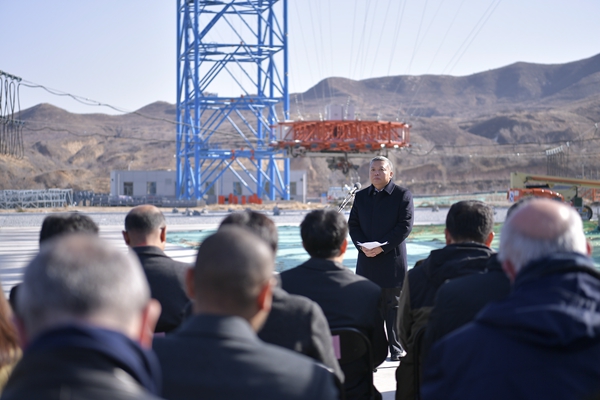 11/14/2019
11/14/2019
On November 14, 2019, China National Space Administration invited some foreign embassies and international organizations to witness hovering and obstacle avoidance test for Mars Lander of China's first Mars exploration mission, and visit relevant test facilities in Huailai, Hebei Province. Zhang Kejian, administrator of China National Space Administration, attended the event and delivered a welcome speech. Wu Yanhua, vice administrator of China National Space Administration, hosted the event.

About 70 guests from 19 countries including the ambassadors and diplomats of Brazil, France, Italy, etc., and representatives of the AU, EU and the Asia-Pacific Space Cooperation Organization, domestic and foreign media reporters attended the event. The test was carried out in Asia's largest extraterrestrial celestial landing test site, simulating the process of hovering, obstacle avoidance and slowing down under the Mars gravity environment (the Martian gravity acceleration is about 1/3 of Earth's), to comprehensively verify the design of the Lander. This event is the first public appearance of China's Mars exploration mission, also an important measure for China to pragmatically carry out space international exchanges and cooperation.

Zhang pointed out in his speech that the exploration for the vast cosmos is a shared dream for all mankind. Ever since the official kick-off in 2016, Chinese Mars Program has progressed well. The hovering and obstacle avoidance test for the Mars Lander makes a crucial part of the development process. China’s first Mars mission which is going to be performed in 2020 is to achieve Mars rover and landing patrols, Martian global and comprehensive exploration, and detailed inspections of key areas on the surface in one single mission.

Zhang said, China Space has been actively promoting international cooperation in its 60 years development. Up to date, over 140 space cooperation protocols have been signed by China with 45 countries and international organizations. China developed China-France Oceanography Satellite (CFOSAT) and Space Variable Objects Monitor (SVOM) with France; developed China Seismo-Electromagnetic Satellite (CSES) with Italy; and China-Brazil Earth Resource Satellites (CBERS) with Brazil, which are considered as an exemplary model of “South-South Hi-tech Cooperation”. In Chang’e-4 lunar exploration mission, China actively cooperated with Germany, Sweden, Netherlands, Saudi Arabia and Argentina. In April, China National Space Administration announced opportunities for cooperation in Chang’e-6 and Asteroid exploration missions. In the GEO summit earlier this month, China announced to make the 16m optical data by GF-1 and GF-6 satellites available to the public. All these measures have enabled more countries, especially developing countries to be able to enjoy the benefits brought by space technology and to advance the social-economic development.
Zhang emphasized that China National Space Administration is willing to join hands with space agencies, space science research entities and foreign space science enthusiasts on the basis of equality, mutual benefit, peaceful use and inclusive development, strengthening exchanges and cooperation in the follow-up major space missions, sharing the achievements of space development, promoting the development of space industry, and contributing more wisdom and strength to build a community with a shared future, and facilitate the progress for human civilizations and social development.